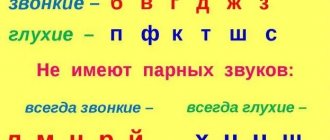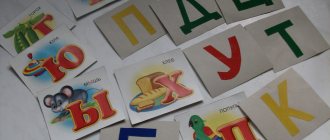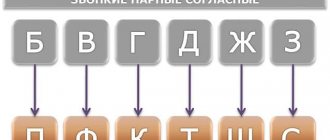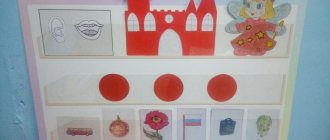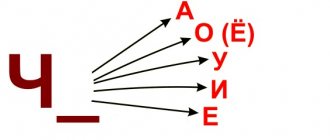Even in elementary school, children learn to spell. There are many rules for writing certain words. Next, we will learn how to correctly write words with paired deaf, voiced, soft, hard consonant sounds.
Russian language is one of the most difficult subjects taught in school. To become literate, a student will have to learn many rules about spelling words . Next, we will study voiced and voiceless, hard and soft paired consonant sounds. We will also consider unpaired sounds that are found in Russian grammar. It is interesting that sounds when reading or speaking are pronounced slightly differently than when they are written under dictation. Therefore, every student must learn correct spelling at school.
Speech sounds
When talking to each other or reading aloud, we pronounce words. Our speech consists of words. Each word is made up of sounds.
Sound is the minimal unit of speech. Speech sounds differ from letters in that sounds are pronounced and letters are written. Letters are used to convey sounds in writing. Sounds create the phonetic shell of a word, which we hear and can reproduce ourselves with the help of our speech organs.
Speech sounds differ from each other in the way they are formed. Some sounds are pronounced in such a way that air passes freely between tense vocal cords and through the oral cavity, which can change its shape. This is how the vowel sounds [a], [o], [u], [e], [i], [s] are formed. They consist only of voice. Other speech sounds, and there are many more of them, are formed differently. During their formation, the exhaled air encounters various obstacles on its way when closing and opening the speech organs and exits through the mouth or nose. In this case, a noise characteristic of each sound arises. This is how consonants are formed:
[c], [p], [k], [s], [t], [b], etc.
Consonant sounds are noisy because they are formed using noise. Most of these speech sounds are paired consonants.
Unpaired voiceless consonants
Among the voiceless consonants there are also unpaired ones that do not correlate with voiced consonants.
Definition
The sounds [x], [x'], [ts], [ch'], [sch'] are unpaired voiceless consonants.
The voiceless consonants [x] and [x'] form a pair based on hardness/softness:
- brave - cunning;
- bread - chemistry;
- thin - frail.
The remaining voiceless consonants are unpaired according to all phonetic characteristics. Let us indicate their features:
- sound [ts] is unpaired deaf, unpaired hard;
- the sound [h'] is unpaired deaf, unpaired soft;
- the sound [ш'] is an unpaired deaf sound, an unpaired soft one.
What are paired consonants?
Consonant sounds consist of noise and voice or only noise. Depending on the ratio of voice and noise in the Russian language, they distinguish
- voiced consonants
- voiceless consonants
Voiced consonants consist of noise and voice. When pronouncing them, tense vocal cords vibrate under the pressure of exhaled air: [b], [c], [d], [d], [g], [h].
Definition
Voiced consonants are noisy sounds in the formation of which noise and voice are involved.
On the contrary, in speech there are consonant sounds that are formed entirely from noise:
[k], [p], [s], [t], [f], [x], [ts], [h'], [w], [w'].
When exhaled air passes, the vocal cords do not vibrate. The voice is not involved at all in their birth. These consonants sound muffled.
Definition
Voiceless consonants are noisy sounds in the formation of which there is no voice.
Many noisy consonants are similar in phonetic characteristics, except for the sign of voicelessness/voice. From this point of view, such voiced and voiceless consonants, similar in their method of formation, form pairs with each other.
Let's write the voiced consonants vertically on the left in accordance with their places in the alphabet. This will make them easier to remember. And we present paired voiceless consonants on the right.
We will clearly demonstrate paired consonants in the following table.
And only sonorant consonants [th'], [l], [l '] [m], [m'][n], [n '][r], [r'] do not have a paired voiceless consonant, and voiceless consonants [x], [ch'], [ts], [sch'] - paired voiced consonant. These are unpaired voiced and voiceless consonants.
Paired voiced and voiceless consonants will help distinguish words:
- steam - bar;
- count - goal;
- melancholy - board;
- heat - ball.
Paired consonants also differ in softness/hardness.
Let's observe:
- raven [v] - rope [v']
- valley [d] - tree [d']
- hubbub [g] - coat of arms [g']
- juice [s] - village [s'].
Only the always hard paired consonants [zh] and [sh] do not have corresponding soft consonants:
- acorn [zh o l u t']
- gluttonous [p a g o r l' i v y ']
- rustle [shorah]
- silk [sho lk].
If paired consonants are in the middle or at the end, then they behave differently. Depending on which sound is nearby, the phonetic process of voicing or deafening occurs. Because of this, difficulties arise in writing words.
Let's see how paired consonant sounds change at the end and in the middle of words.
Hardness-softness pairs
In addition to deafness and voicedness, Russian consonants form pairs based on hardness and softness.
This means that some of them are perceived by ear as softer sounding. Then we usually indicate this in writing somehow: for example, we write a soft sign or one of the vowels E, Yo, Yu, Ya.
Oral speech is primary (everyone understands that it appeared before written speech), therefore it is incorrect to say: “The sound [N'] in the word HORSE is soft, because it is followed by b.” On the contrary, we write b because H' is soft.
According to hardness-softness, consonants also form pairs. But even in this case, not everything. In the Russian language there are unpaired soft and unpaired hard consonants.
Unpaired hard consonant sounds are mainly hissing sounds ([Zh], [Sh]) and [C]. They always form at the far palate.
But in the ancestor of our language, Old Church Slavonic, on the contrary, [ZH] and [SH] were always soft and did not have a hard pair. Then [K], [G] and [X] were not soft. Nowadays you can find (once the only possible) pronunciation with a soft [Zh'] [DROZH'ZH'I] or [DOZH'] (rain), but this is no longer necessary.
Unpaired soft ones are [Y'] and again hissing [H'] and [Ш'].
That is, all hissing ones are either always hard or always soft. The letter b after them does not indicate softness, it performs a grammatical function (for example, even without knowing what “baldness” is, anyone will immediately say that this is a feminine word, because in the masculine gender b is not placed after hissing words). Hard unpaired hissing consonant sounds in a word may have b with them, but this does not mean that they should soften. This means that we have a 3rd declension noun, an adverb or a verb.
Unpaired soft consonant sounds in a word make you want to put b after them, which is often not required. Therefore, it makes sense to remember that in combinations CHK, CHN, etc. b after h is not needed.
Paired consonants at the end and middle of a word
If a voiced consonant ends up at the end or before a voiceless consonant in the middle of a word, then this position is weak for it. When pronouncing at the end of a word, a phonetic process of deafening a voiced consonant inevitably occurs. Let's listen to how the final consonants sound in words:
- crab [n]
- cover [f]
- boot [k]
- city [t]
- youth [w]
- failure [s].
Definition
Stunning is the replacement of a voiced consonant at the end or in the middle of a word with a paired voiceless consonant.
In the middle of words, a voiceless consonant affects the previous voiced one and changes the quality of its sound. The voiced one becomes like it and when pronouncing the word becomes deaf. Let's make sure of this:
- box [n]
- witchcraft [f]
- gingerbread [w]
- guess [t].
Similarly, doubts may arise about the spelling of words with final voiceless consonants:
- response (“k” or “g”)
- eralash (“w” or “w”)
- voice (“s” or “z”).
Voiceless consonants, when placed in front of voiced ones, also change their sound. There is a phonetic process of voicing of voiceless consonants:
- request [z']
- beat off [d]
- unload [z].
Definition
Voicing is the replacement of a voiced consonant with a paired unvoiced consonant at the end or in the middle of a word before the unvoiced one.
As you can see, the sound of paired consonants and the spelling of the corresponding letters in the word do not coincide.
Additional material
See more examples with paired consonants.
Application of the rule
The spelling of paired consonants needs to be practiced. You need to start by developing the ability to see the spelling pattern being studied. This will be the end of a word or a combination of consonants, in which sounds begin to influence the sound of each other - the subsequent one changes the quality of the pronunciation of the previous one.
| Spelling patterns - paired consonants | |
| at the end of a word | in a consonant cluster |
| bo[n]bro[t]bro[f']gvoz[t']ogoro[t]dro[w] | polo[s]kako[z']bare[z']bagoro[d']bacro[v']stra[sh] |
Next, we practice the skill of selecting test words.
When we know what a paired consonant is, it is not difficult to draw a conclusion about which option to choose:
- bo[p] – beans – bean;
- bro[t] – broda – ford;
- bro [f'] – eyebrows – eyebrow;
- nail[t'] – nails – nail;
- vegetable garden [t] – vegetable gardens – vegetable garden;
- dro[sh] – trembling – trembling;
- stripe [s]ka – stripe – stripe;
- ko[z']ba – mow – mowing;
- re[z']ba – cut – carving;
- goro[d']ba – fence – gorodba;
- kro [v'] – blood – blood;
- str[sh] - guard - guard.
How to check paired consonants in a word?
In such cases, we remember that in writing paired consonant letters one should not rely on the pronunciation of the word. In Russian, many words are written differently from how they are heard. In writing, devoicing and voicing of consonants are not indicated. The morpheme retains its single spelling regardless of its sound, except in cases of alternation. Let's turn to the rule for writing paired consonants.
Rule
In a word, the letter that appears in the form of this word or in a related word is written if the consonant is followed by a vowel or “l”, “m”, “n”, “r”, “v”.
To establish the true nature of the root consonants and check paired consonants, we take the following steps:
1. put the word with a doubtful final consonant in the plural form:
- crab - crabs;
- cover - covers;
- boot - boots;
- city - cities;
- refusal - refusals;
- voice - voices;
- response - responses.
The word "youth" does not have a plural form. Then we resort to another method of verification.
2. We form the singular or plural form of the genitive case, in which the words “many” or “no” will help us:
- youth - a lot of youth;
- jumble - no jumble;
- box - many boxes;
- gingerbread - no gingerbread.
After the dubious consonant, a vowel sound appeared, which clarified its sound.
3. Let’s look for a related word in which after the paired consonant being checked there will be a vowel sound or sonorant “n”, “l”, “m”, “r”:
- beach - beach;
- fold - fold;
- error - mistake, erroneous;
- paw - paw, little paw;
- cart - to carry;
- shirt - shirt.
In many words of the Russian language, most often borrowed, it is impossible to check paired consonants using a “control word”. These are vocabulary words whose spelling we will remember:
- joke
- railway station
- boots
- zigzag
- astronaut
- coupling
- backpack
- football
etc.
Test on the topic
- /10
Question 1 of 10Choose the correct statement
Start test
Hall of Fame
To get here, take the test.
- Vasilisa Kozlova
8/10
- Aliya Karashaeva
10/10
- Sergey Efremov
8/10
- Olga Gorkova
9/10
- Liliya Golomolzina
10/10
Article:
The sounds [р], [р'-рь] normally appear in a child at the age of 5-6 years.
If a child at 6 years old does not have the sounds [р], [р'], be sure to contact a speech therapist. If in a child’s speech the sounds [р], [р'] appeared in a distorted version earlier, for example, the child’s throat [r] appeared at 4 years old, contact a speech therapist as soon as this happened. Distorted sounds themselves are never restored, but are only fixed in the child’s speech, which will make it difficult to correct sounds at an older age. How to pronounce the sound [r].
- the tip of the tongue is raised to the alveoli of the upper teeth - it is tense and vibrates;
- the back of the tongue is pushed back and slightly raised towards the soft palate;
- the lateral edges of the tongue are pressed against the upper molars;
- the back of the tongue is lowered;
- a strong stream of air passes through the middle;
- the position of the lips is neutral, the lips are open;
- teeth are brought together to a distance of 4-5 mm;
- The vocal folds are closed and vibrate – producing the voice.
Articulatory features of the sound [r].
[r] – consonant sound. The air escaping from the oral cavity encounters a barrier; [r] – mouth sound. The soft palate is raised, the uvula is pressed against the back wall of the pharynx, air enters the oral cavity; [r] – ringing sound. When pronouncing the sound [r], the vocal cords are closed, vibrate, and a voice is formed; [r] – a trembling sound, vibrant according to the method of formation. The tip of the tongue is raised up and rhythmically oscillates (vibrates) in the passing air stream; [r] – anterior lingual sound at the place of formation. A barrier to the outgoing air stream is formed by the front part of the back of the tongue.
Acoustic signs of sound [p].
[p] – sonorant (resonant) sound - its quality is determined by the nature of the sound of the voice, which plays a major role in the formation of sound, and noise participates to a minimal extent; [r] - hard sound - the middle part of the back of the tongue does not take an active part.
Sound disorders [p].
- The sound [r] is absent in the child’s speech - rhoticism.
- The sound [r] is replaced - pararotacism: - with [s]; - on [l]; - on [in]; - on [p']; - on [g]; - on [th].
- The sound [p] is distorted: - velar distortion of sound; - uvular distortion of sound; - lateral; - continuous or single-impact; - nasal; - coachman's or bilabial; - buccal.
How to pronounce the sound [r'] correctly.
When pronouncing the sound [p'], the position of the organs of articulation is similar, but:
- lips stretch more to the sides;
- the tip of the tongue is raised to the upper incisors (lower than when pronouncing the sound [r]), vibrates;
- the middle part of the back of the tongue rises a little higher towards the hard palate and forward, and the back of the tongue is advanced forward.
Articulatory features of the sound [p'].
[р'] – consonant sound. The air escaping from the oral cavity encounters a barrier; [р'] – oral sound. The soft palate is raised, the uvula is pressed against the back wall of the pharynx, air enters the oral cavity; [р'] – voiced sound. When pronouncing the sound [p'], the vocal cords are closed and tremble, a voice is formed; [р'] – anterior lingual sound at the place of formation. The barrier to the outgoing air stream is formed by the front part of the back of the tongue; [р'] – a trembling sound, vibrant according to the method of formation. The tip of the tongue is raised up and rhythmically oscillates (vibrates) in the passing air stream.
Acoustic signs of sound [p'].
[r'] - soft sound - the middle part of the back of the tongue is additionally raised towards the hard palate. [р'] – sonorant (resonant) sound - its quality is determined by the nature of the sound of the voice, which plays a major role in the formation of sound, and noise participates to a minimal extent;
Sound disturbances [р'].
- The sound [r'] is absent in the child’s speech - rhoticism.
- The sound [r'] is replaced - pararotacism: - with [s]; - on [l']; - on [in']; - on [g']; - on [th].
- The sound [р'] is distorted: - velar distortion of sound; - uvular distortion of sound; - lateral; - nasal; - buccal.
